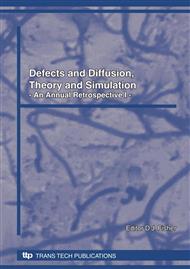p.1
p.15
p.27
p.39
p.49
p.65
p.77
p.85
p.93
Gouge Assessment for Pipes and Associated Transferability Problem
Abstract:
The purpose of this work is to assess a gouge defect in a pipe submitted to internal pressure. To do that a method is used which is based upon a failure assessment diagram and, more precisely, upon a Modified Notch Failure Assessment Diagram (NMFAD) which has been proposed as a mesofracture approach. The safety factor has been determined under conservative conditions; i.e for a X52 pipe steel having a relatively low fracture toughness and a severe gouge defect with high aspect ratio and high constraint. In addition, a mesofracture approach to the fracture toughness transferability problem has been proposed. The crack (K-T) methodology has been modifed to create the ( –Teff) two-parameter fracture resistance criterion.
Info:
Periodical:
Pages:
15-25
Citation:
Online since:
December 2009
Authors:
Price:
Сopyright:
© 2009 Trans Tech Publications Ltd. All Rights Reserved
Share:
Citation:


